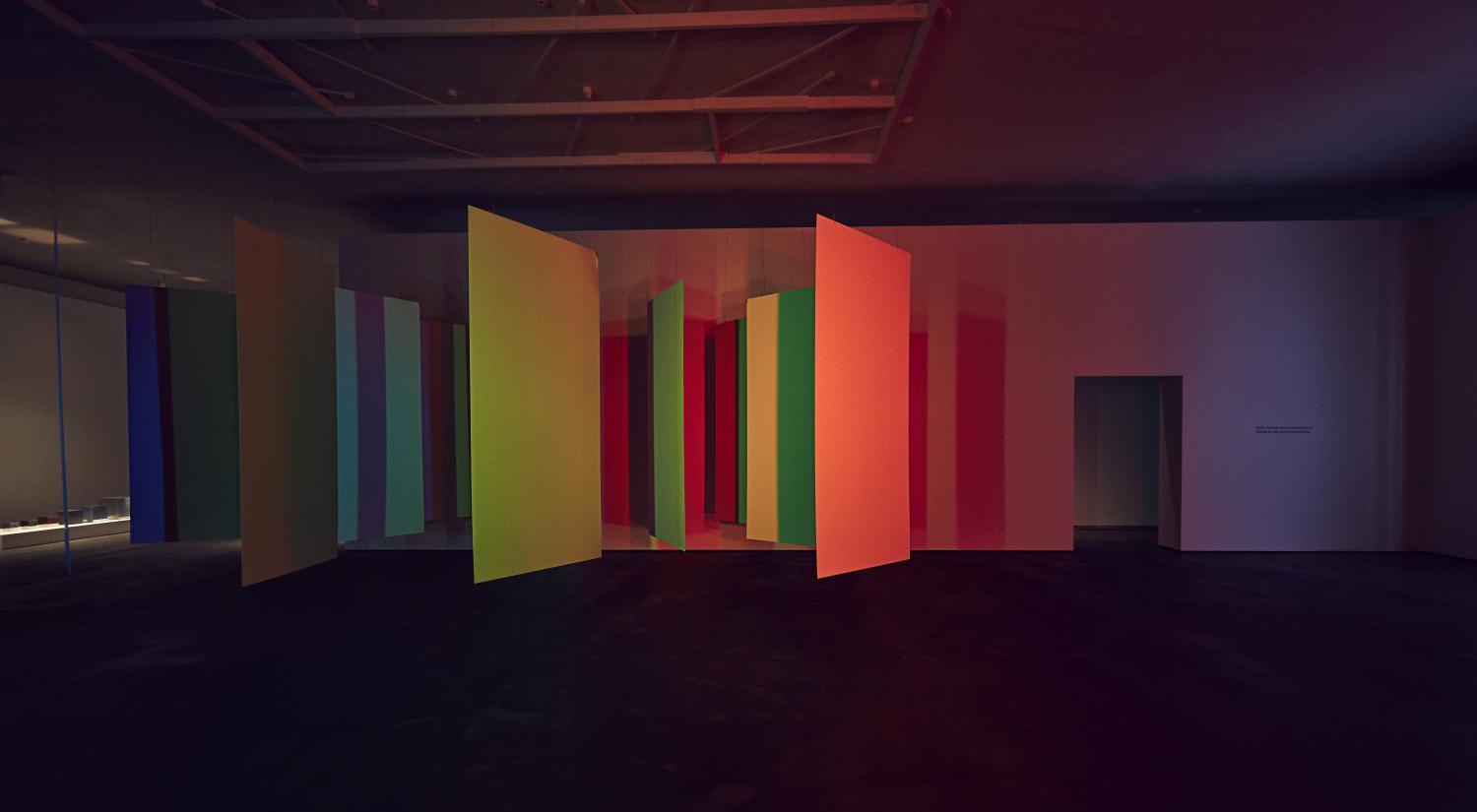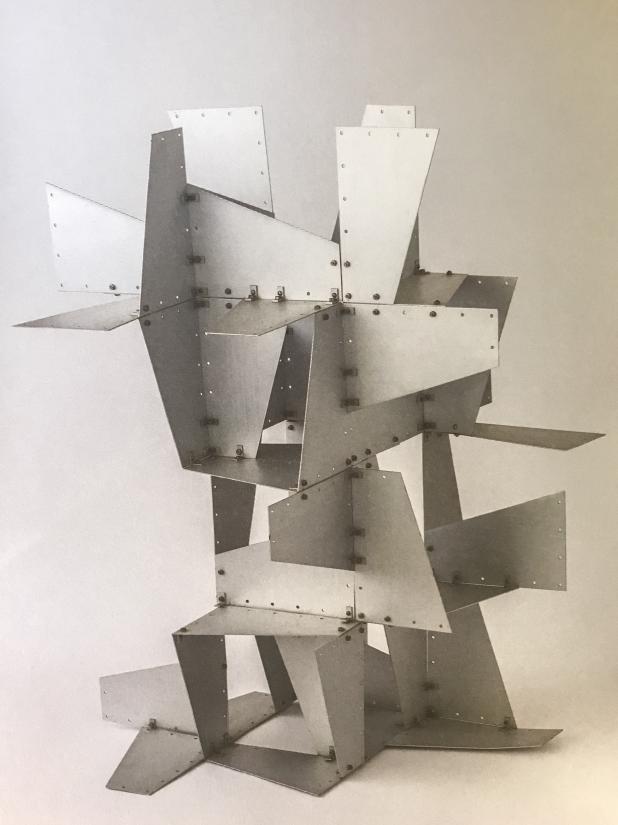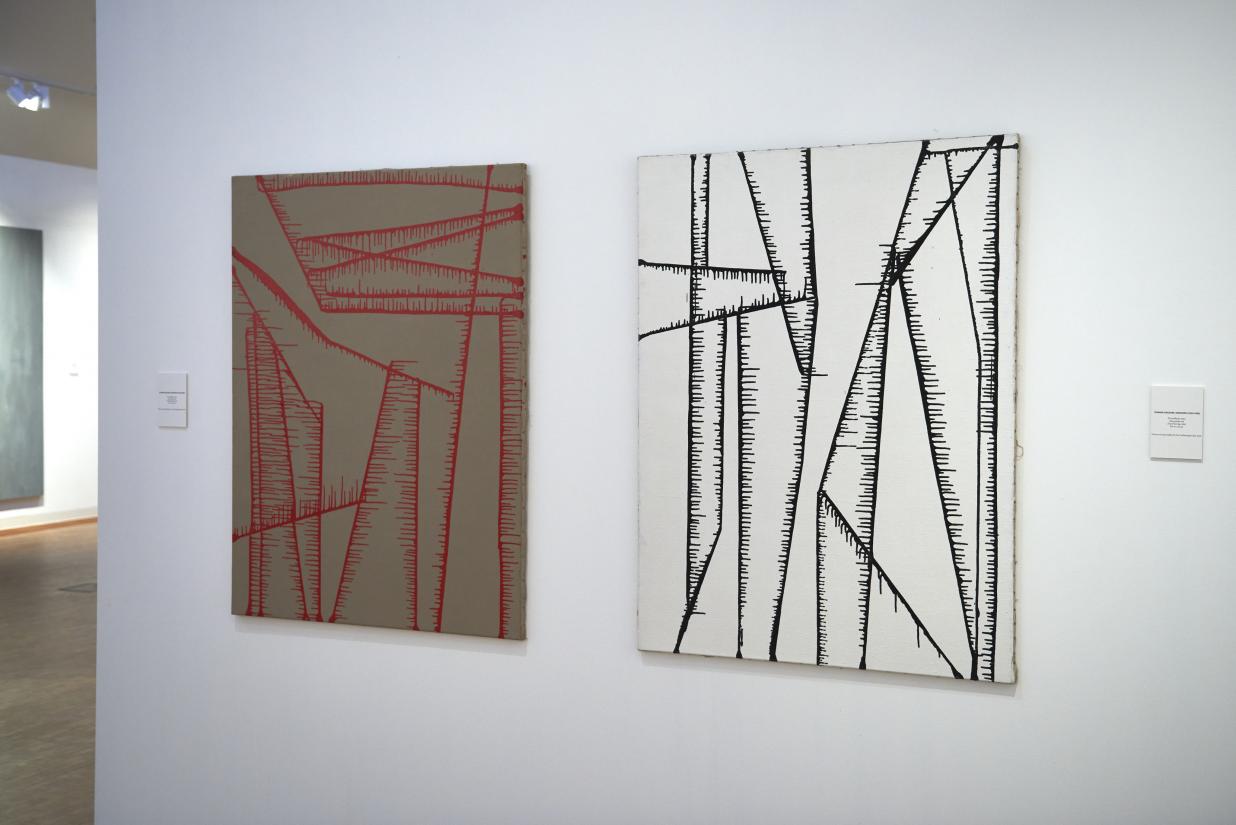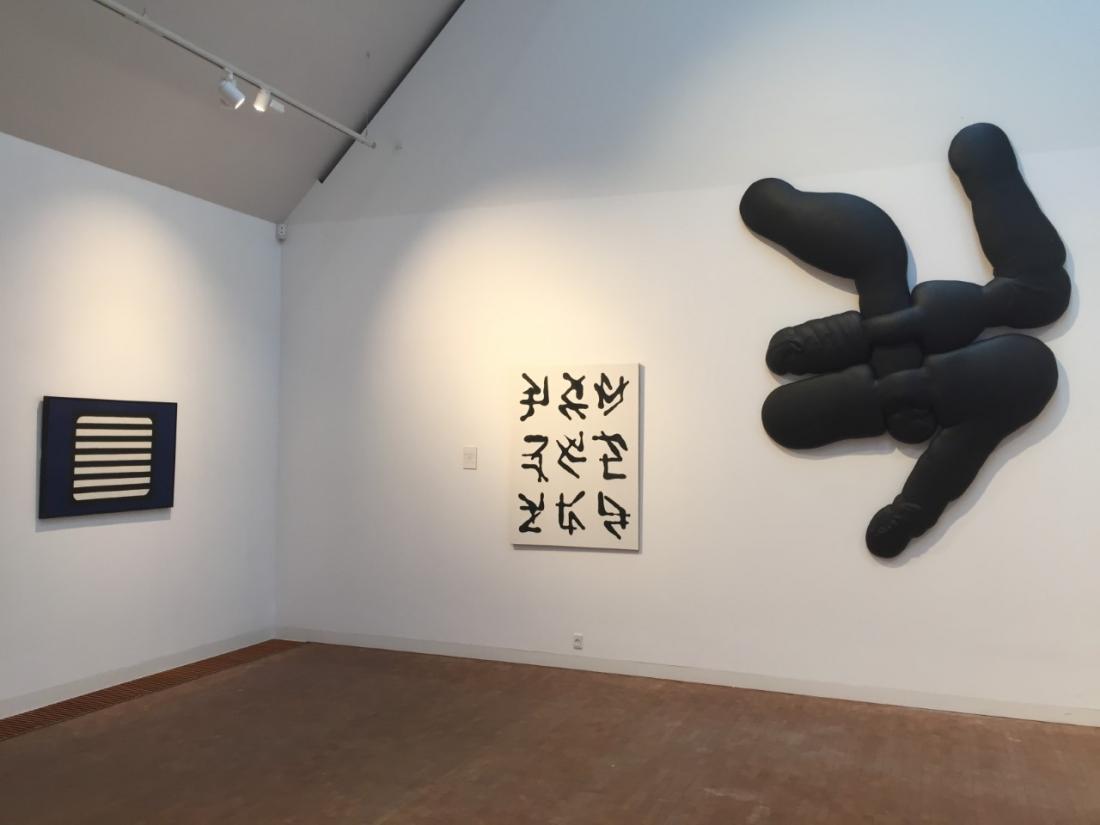Gunnar Aagaard Andersen was a unique figure in Danish concrete art. He often worked at the intersection of art and the commercial field and mastered both sculpture and the two-dimensional surface as well as the use of light as a medium. His diverse artistic expression is manifested in the works that are now part of the three art museums’ collections.
Endlessly
The sculpture Aluminiumsskulptur med identiske elementer (Aluminium Sculpture with Identical Elements) is from Aagaard Andersen’s early oeuvre. It is constructed of identical trapezoid sheets, and this building kit of geometric forms makes for an airy and dynamic construction, as it seems to be able to continue endlessly upwards and out to the sides. The sculpture is an example of the image-generating potential of standardization and templates, which many of the concrete artists employed. It is also an insistently modern work for a time when society was just beginning to move into industrial standardization, featuring modular plates and perforations reminiscent of punched cards and the incipient information society.
Light and colours
Additiv farveblanding (Additive Colour Mixing) has a much more colourful expression. At an early stage in his artistic practice, Aagaard Andersen developed an interest in working with the medium of light, and in his light installations he explored both light as a phenomenon and colour systems in general. The work exemplifies his experiments with coloured light and shadow effects. The movable white plastic panels are suspended freely in the room and illuminated by red, green and blue light, allowing the viewer to ‘step into’ the artwork and thus also appealing to their senses and bodily experience.
Controlled chance
The interplay of rules and chance, system and material, was a general point of departure for Aagaard Andersen. In his ‘running pictures’ he turned his working process into a generator of chance. To create these pictures he did a straight brushstroke and allowed the thin paint to run down the canvas, then rotated the picture and repeated the process with a new stroke. In this way we controlled and incorporated the chance occurrence into his systematic pictures.
In Vægavis, den rette, den stumpe og den spidse vinkel (Wall Newspaper, the Straight, the Obtuse and the Acute Angle) and the three-dimensional wall-mounted Tegn (Sign), Aagaard Andersen undertakes a different investigation of the systematic principle. The works are a series of signs where straight, obtuse and acute angles are used to form a language. The geometric forms are preserved, but the legibility is lost, and the systematic combination of triangles, squares and circles is challenged by the soft brushstrokes and the liquid polyurethane, which breaks up the clean lines. In this way, the nature of the materials comes to determine the aesthetic form of the works.
About Gunnar Aagaard Andersen
Gunnar Aagaard Andersen (1919–82) worked as a visual artist, an architect, a graphic artist, a designer, a scenographer and a composer and often at the intersection of art and the commercial field. From the late 1940s until the early 1950s he was a member of the artists’ group Linien II (The Line II). During this time he lived in Paris, where he studied the old masters at Louvre, which helped inspire the compositional rules that would guide his future artistic contribution. He was a professor at the Royal Danish Academy of Fine Arts in Copenhagen from 1972 to 1982 and was awarded the Eckersberg Medal and the Thorvaldsen Medal.






